The Add-E kit has always impressed me with its compact size and weight. The motor unit can be quickly and easily removed and even the battery pack (which resembles a traditional water bottle) can be taken off and replaced with an actual bottle for drinking purposes or you could get a second holster and double your range for ~$300 and ~2.5 lbs extra. Basically, you can switch between an ebike and your traditional pedal powered bike in under three minutes… but even if you decided to leave the motor and battery connected at all times, the total weight is just five pounds and the friction drive canister doesn’t produce any drag because it “floats” in front of your rear wheel, never making contact unless you hit a small bump. Once the system is switched on and the control unit senses wheel movement and pedal assist or throttle input, the motor spins into action sending it backwards with centripetal force, engaging the tire and propelling you forward. It’s a beautiful system and priced at just over one thousand dollars (for the 250 watt version) or $1,251 for the 650 watt being covered here, it’s one of the more affordable kits I’ve seen that’s all inclusive.
So is the 600 watt Add-E kit faster more powerful than the international 250 watt kit? The short answer is not really. From what I can tell (using both kits, weighing all of the components and using a cycle computer) it appears that the motor hardware is the same, along with the battery pack, and all you’re getting is an unlimited top speed. While it is possible to go faster, it just doesn’t feel much different and still struggles with hills and even grass. The Add-E kit takes a while to ramp up speed and my hopes of using this off-road were dashed after a lackluster urban experience. So maybe it’s worth the extra $250 if you truly just need to go a little faster when riding but the limitations of the battery size remain, your range may decrease to just six miles per charge when riding at “high speed” but I’d still wager a maximum range in the lowest pedal assist mode at 16 miles. There are five power levels to choose from using the twist cap on the bottle battery (gently twist to the left to turn it off and to the right for more power) but without a display it’s difficult to tell how much battery power remains and I noticed that even when it’s “off” the red LED on the base of the motor unit continues to flash which may draw power and run it completely dry. I recommend taking the battery off the bike when not in use.
One of the greatest challenges to overcome when reviewing this kit was installation… but only when using the carbon fiber bottom bracket option. If your bike has a kickstand plate behind the bottom bracket then it’s a breeze. The length of the video review for this kit is a testate to what Sam and I went through to prep our bike platform and ultimately install it and while you may not have quite as many steps as us… it’s still time consuming and special tools may be required such as a bottom bracket puller. Frankly, I’d just ask my local shop to install it for me. The second big challenge relating to installation was setting the unit for high speed operation. When I received it the top speed was only ~15.5 mph (25 km/h) which was confusing and disapointing. Nothing in the manual I received explained how to change it so I called ELV Motors in Santa Clara, CA (the official distributor) and Nate helped me out over the phone. In short… turn the battery up to full power (five clicks to the right) then take it off the bike. Now unplug the white connector from the Add-E motor unit while leaving the black power cable plugged in. Next, insert the small speed chip into the slot that had the white cable in it before then plug the bottle battery back onto the mount. Look at the flashing red LED light on the base of the Add-E and confirm that it’s flashing in intervals of six (1, 2, 3, 4, 5, 6 wait 1, 2, 3… and so on). This is your confirmation that the kit is now “unlocked” for higher speed. Frankly I wish this had been done before I received the kit because the chip is so small and easy to lose and the lack of instructions… hours wasted :(
Note that instead of a seamless look, our final Add-E electric bike demo bike was a bit tackier appearance due to the wire running from the control unit at the motor up to the handle bars for the throttle. I received both a trigger and twist throttle for testing but went with a trigger to leave room for the gear shifters near the right and left grips. For me it was worth it because I like to use throttles sometimes and wanted to test the motor on its own vs. pedaling to see how fast it would go. Due to the safety setup (where the motor won’t start even in throttle mode unless the bike is going 2+ mph) the throttle wasn’t immediately useful but did make filming easier.
While I’m still very impressed with the price, size and ease of use after installation… the Add-E kit remains noisy and I feel the 600 watt rating does not accurately reflect the difference in power or speed coming from the 250 watt version. This is basically a 20 mph kit and possibly 250 watts nominal up to 600 watts peak but with pretty low torque. Still, I’d rather have an unlimited kit than one that cuts out at 15.5 mph even if that means my battery drains a little quicker. If we look at my ideal commuting setup then it would cost ~$1,600 for the system with one extra battery plus the price of a bike so it’s not much less expensive than a purpose built ebike that’s much powerful and capable of longer rides. However, this is one of the few kits that can be mounted on a super efficient road bike platform and that’s exciting. There are very few kits that offer what the Add-E does and if they could make it silent I would be twice as interested and excited. It’s a beautiful system and one that sort of grows on you after the initial shock of the sound and lackluster power. It’s going to work better on some bikes than others and is probably best suited to light weight riders.
Pros:
- The bottle style battery is extremely convincing and I love the way it operates (twist the cap to the right for additional power (there’s a difference between level 1 and level 5 but the middle all feels similar)
- It’s great that this kit can work as pedal assist only or you can opt for twist and trigger throttle options depending on your needs (throttle mode will likely drain the battery faster if you choose not to pedal as actively and requires the bike to be going ~2 mph to activate)
- The kit is extremely light weight (~5.5 lbs for all pieces combined) and minimal in appearance, the basic pedal-assist only setup has only one wire and keeps the handlebar area of your bike clean, if you add a throttle you’ll have one wire going from the battery area to your bars
- Once the mounting plate has been installed, it’s pretty easy to remove the Add-E motor by loosening one bolt and unplugging the power… then simply take the bottle battery off and you’re back to a normal bike
- The bottle cage battery adapter can be used with traditional water bottles (if you take the battery and Add-E off) but the bottle won’t sit perfectly flat at the bottom due to the plug interface
- You can get additional batteries for ~$300 to increase range and since they fit into normal bottle cages you could potentially have two mounted to the bike if you have bosses on the downtube and seat tube, each pack only weighs ~2.5 pounds which is nice
- Because the motor and battery are mounted at the middle of the frame you get excellent balance and reduce unsprung weight compared with a hub motor… that said, I don’t think it would work well with a full suspension bike due to wheel movement and limited travel of the Add-E
Cons:
- To unlock the higher speed of this Add-E kit I had to use a little computer chip that was included but there were no instructions… In short, remove the battery and unplug the white cable then insert the chip there, now turn the battery all the way up to level five (twist to the right) then plug it into the bottle cage interface, now look for six red flashes (repeating) at the base of the motor then unplug the battery from the bike and you should be good
- The battery design is cool but didn’t appear to have an auto time-off so if you forget to manually twist it to off you may drain the battery slowly, without a display unit or lights to show that it’s on it’s just easier to overlook
- Despite being rated at 600 watts and labeled as a speed pedelec, this version resembles the base 250 watt kit in terms of performance, I feel that it may be the same motor but have the top speed limit removed
- There are no display readouts so you can’t tell how full the battery pack is, how fast you’re going, how far you’ve traveled or anything else… you have to estimate or get a separate cycle computer but that still won’t display your battery
- The battery capacity offered by this kit is extremely small compared to most kits and bikes I review (about 30% of average) so the range is lower, but it’s also much lighter than traditional offerings
- You absolutely need space to mount the bottle cage but Add-E does sell an adapter kit for those without threaded bosses on their seat tube or downtube
- Depending on the frame design of your bicycle this kit may be easy to install (using a kickstand plate just behind the bottom bracket) or difficult (mounting Carbon fiber plates directly to the bottom bracket) it took us several hours and special tools to get it working
- The five magnet pedelec disc isn’t as responsive as a 12 magnet disc and you don’t get brake levers with integrated motor inhibitors so there are brief moments where you may be braking against the motor
- If you mount this kit using the kickstand plate you may no longer be able to use the actual kickstand and your bike may tip… consider an aftermarket chain-stay mounting kickstand
Resources:
- Official Site: http://www.add-e.us/
- US Dealer: http://www.elvmotors.com/
- More Pictures: https://goo.gl/photos/wfXHmEw2BpcsDKBx9

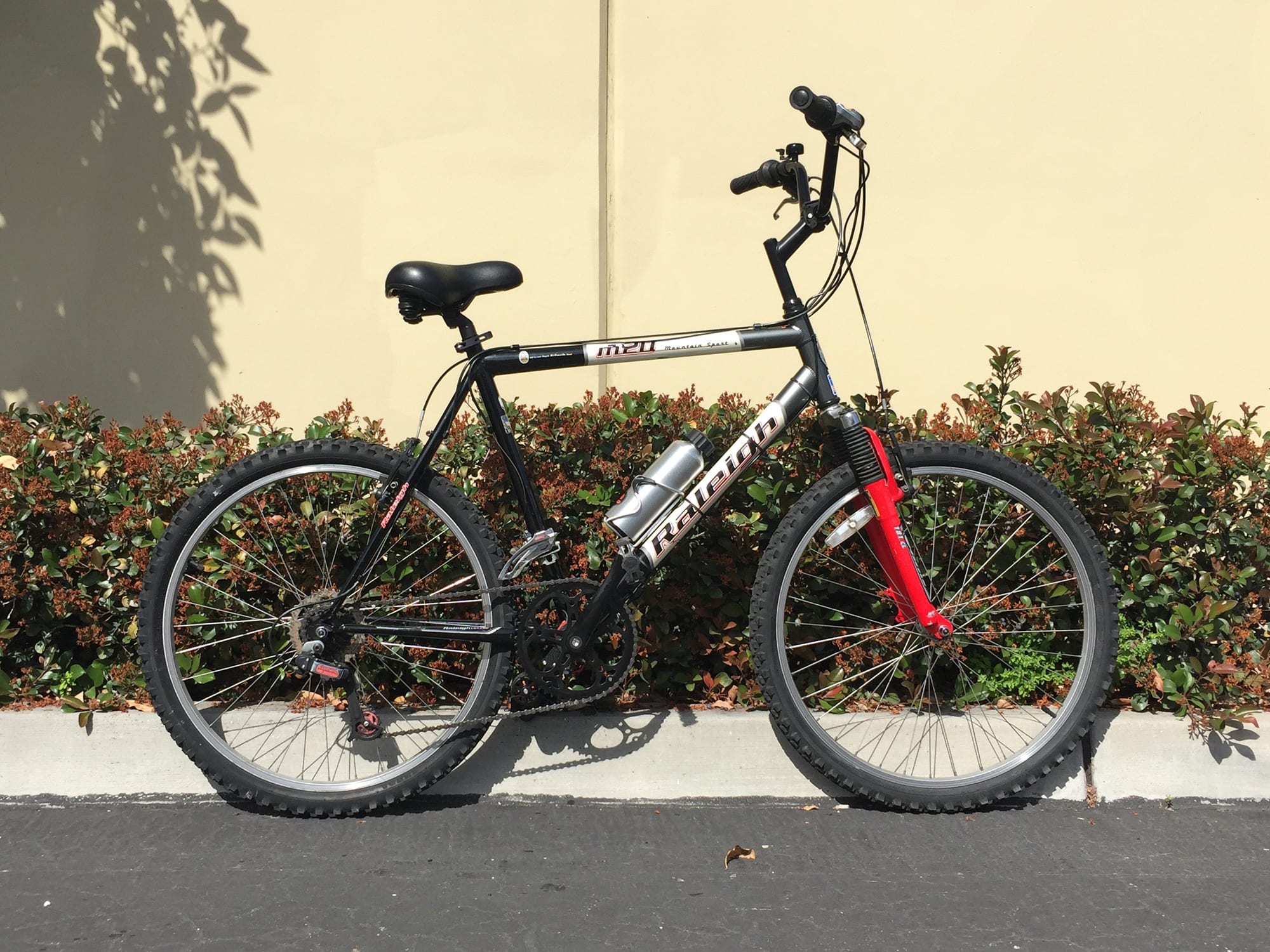
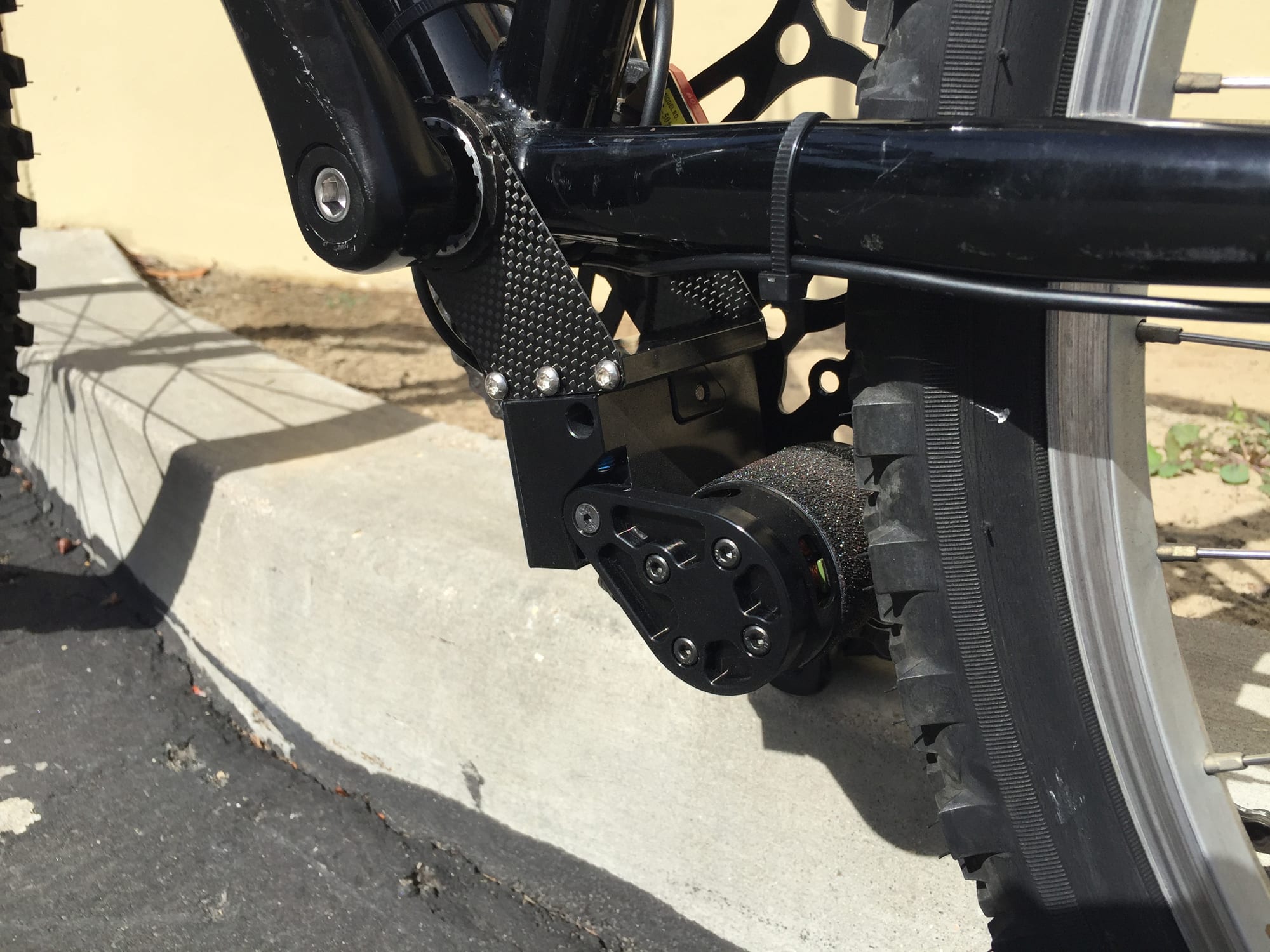
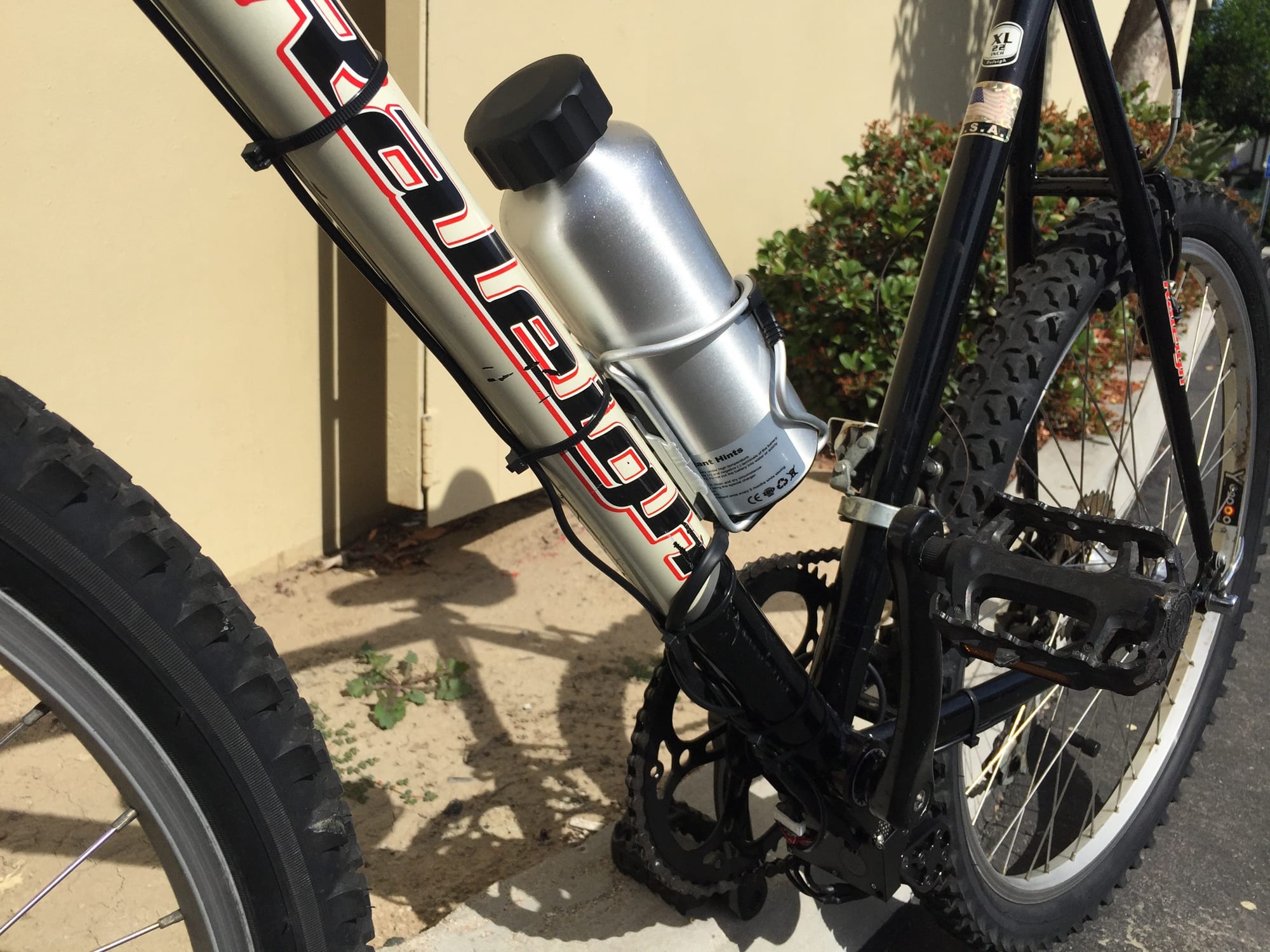
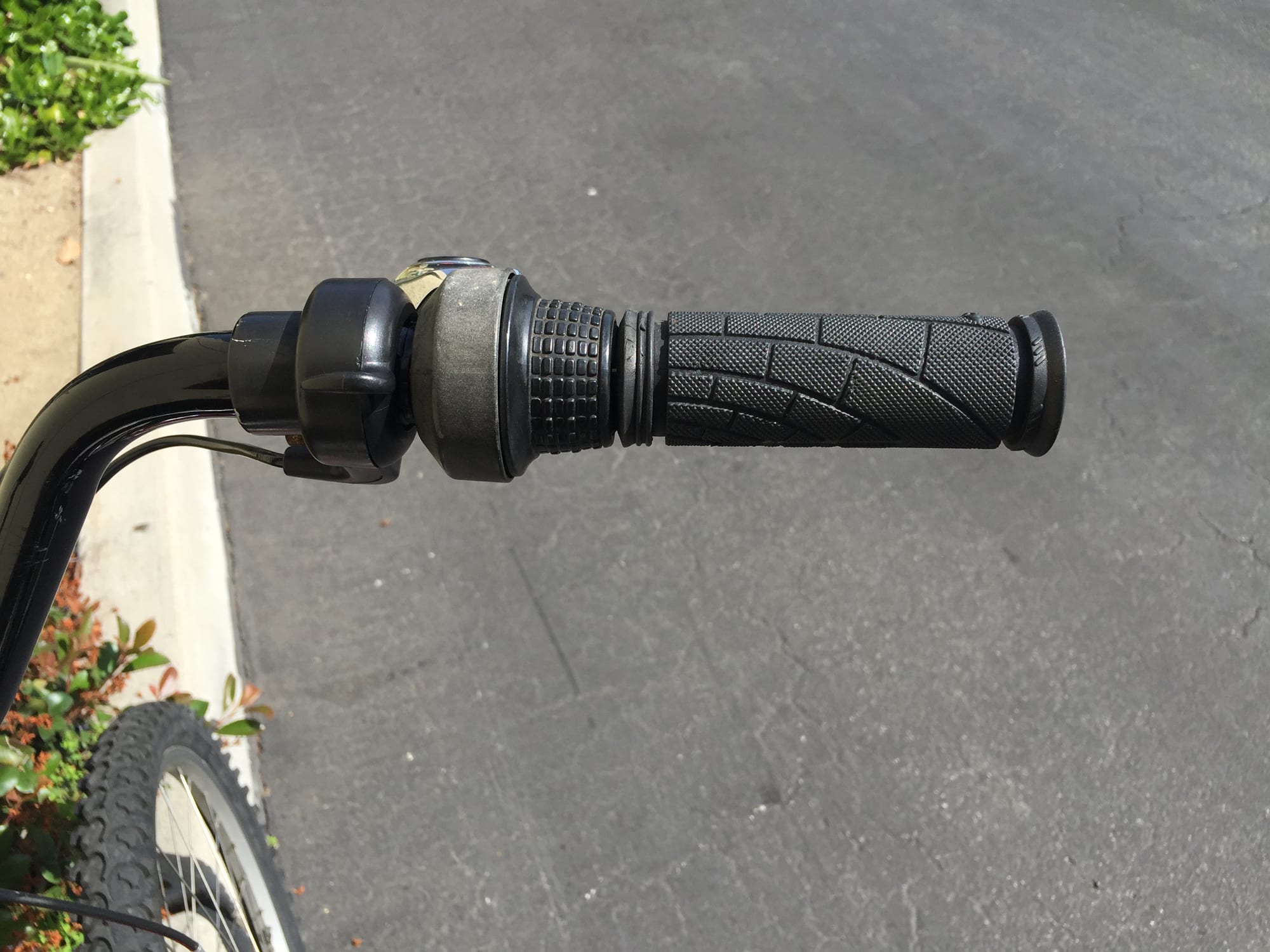


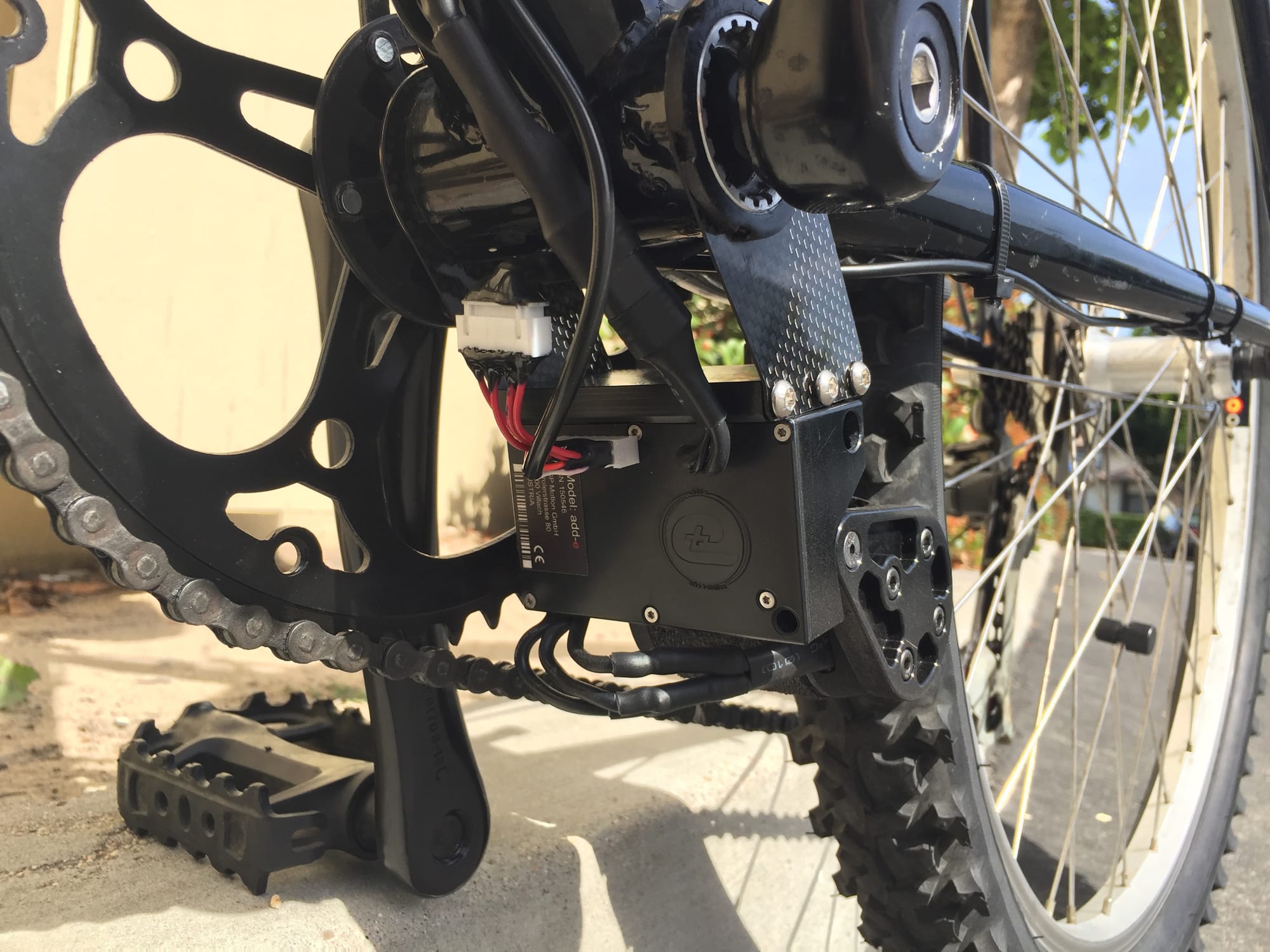

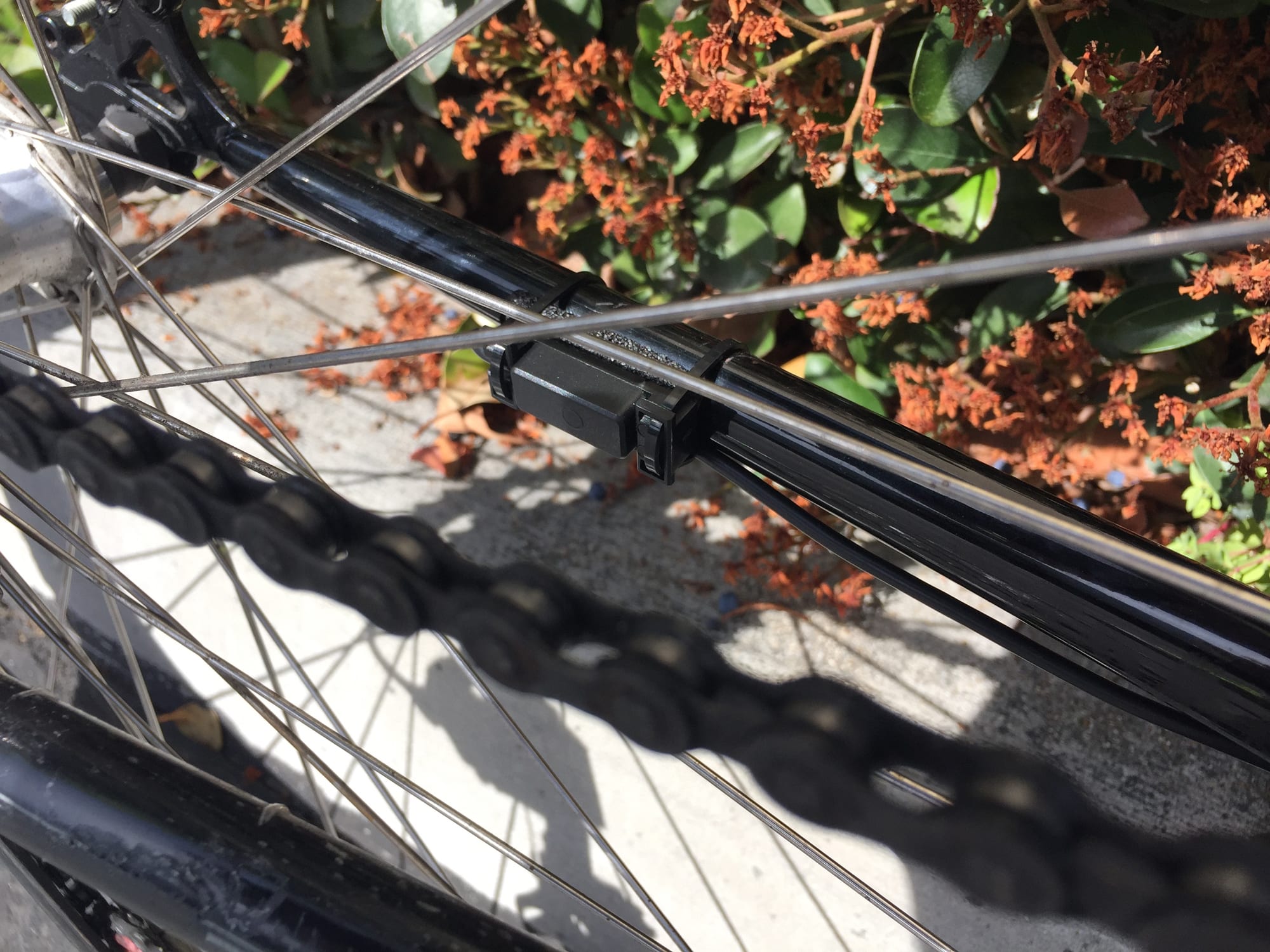
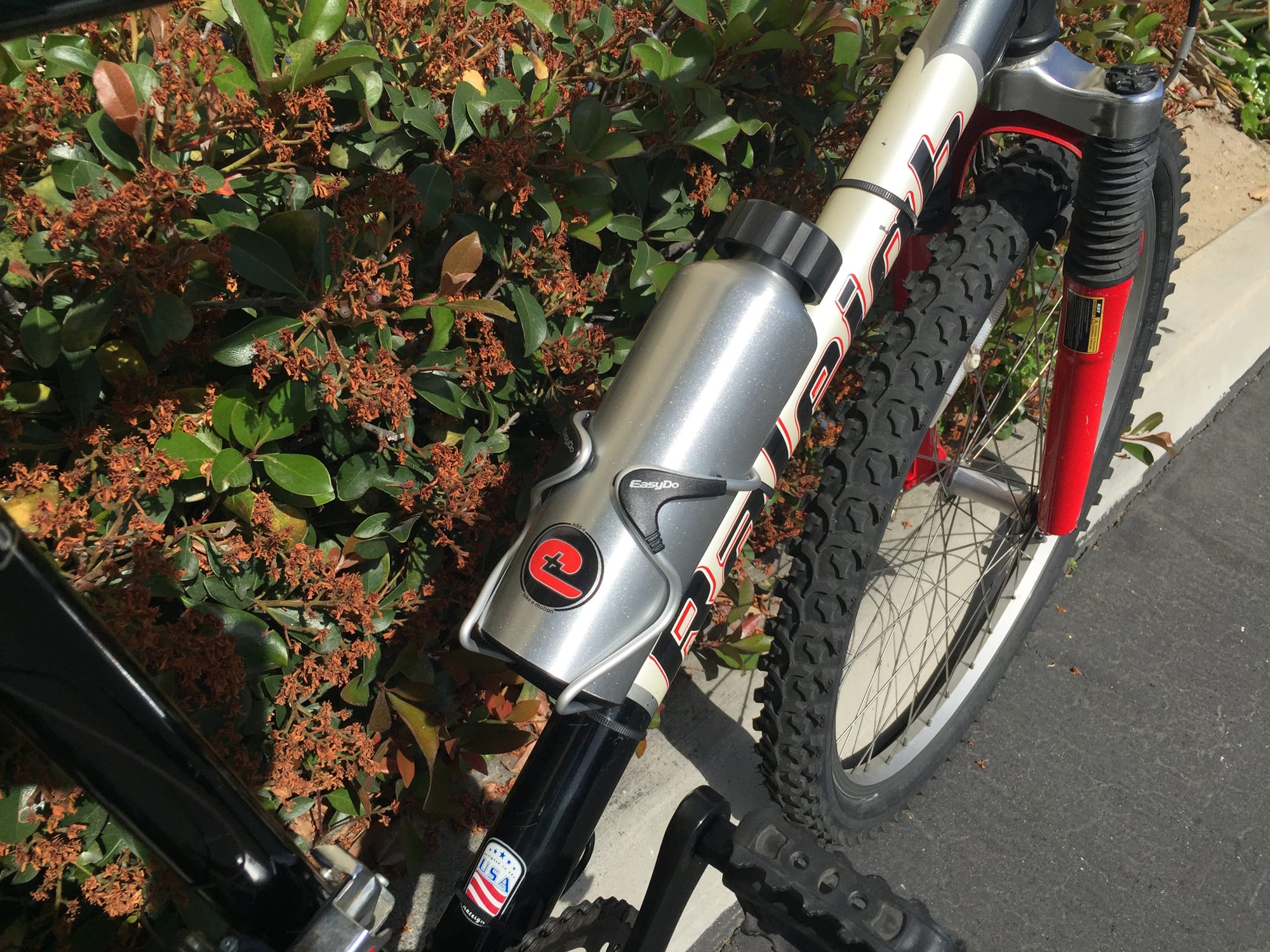
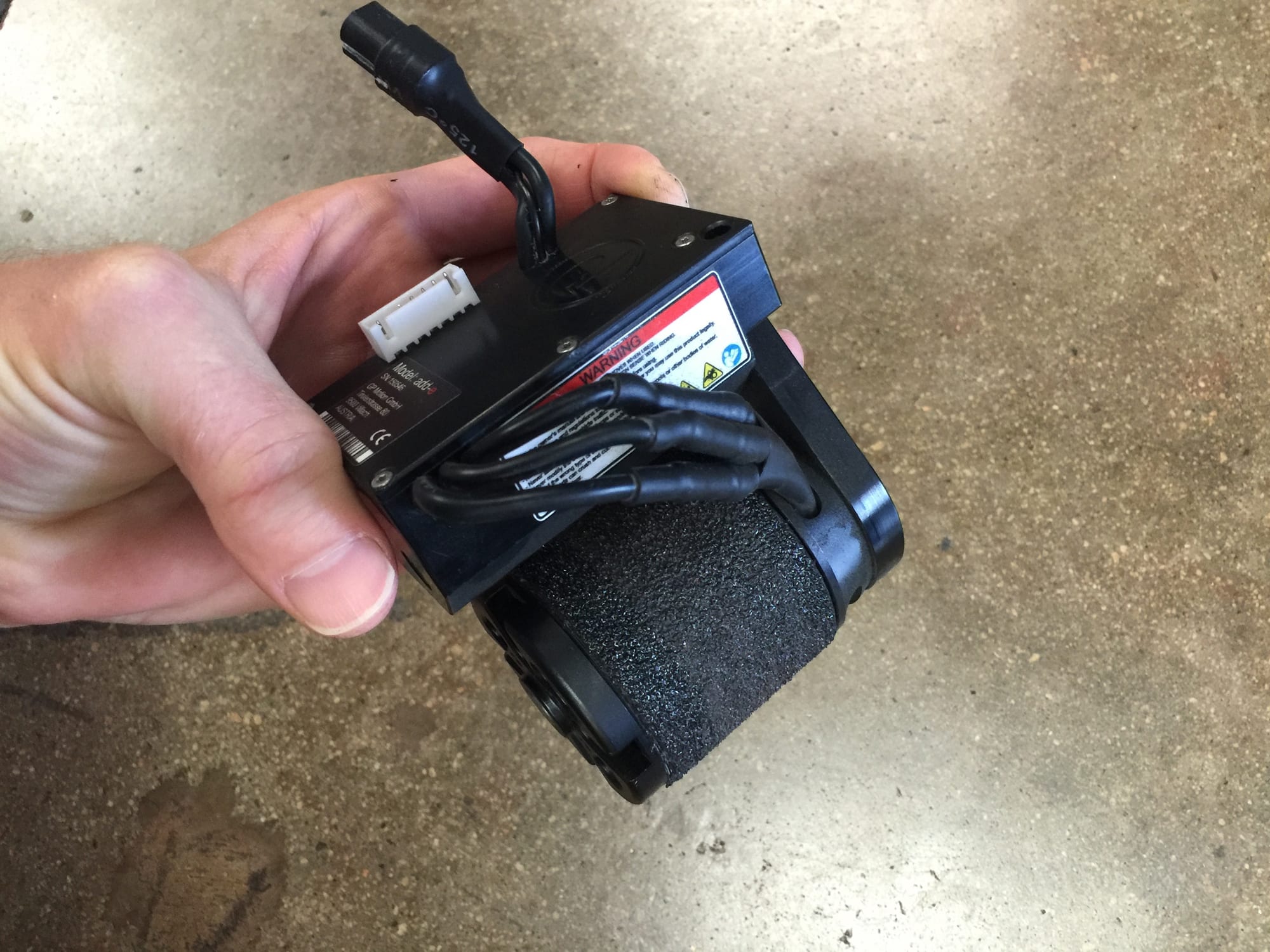


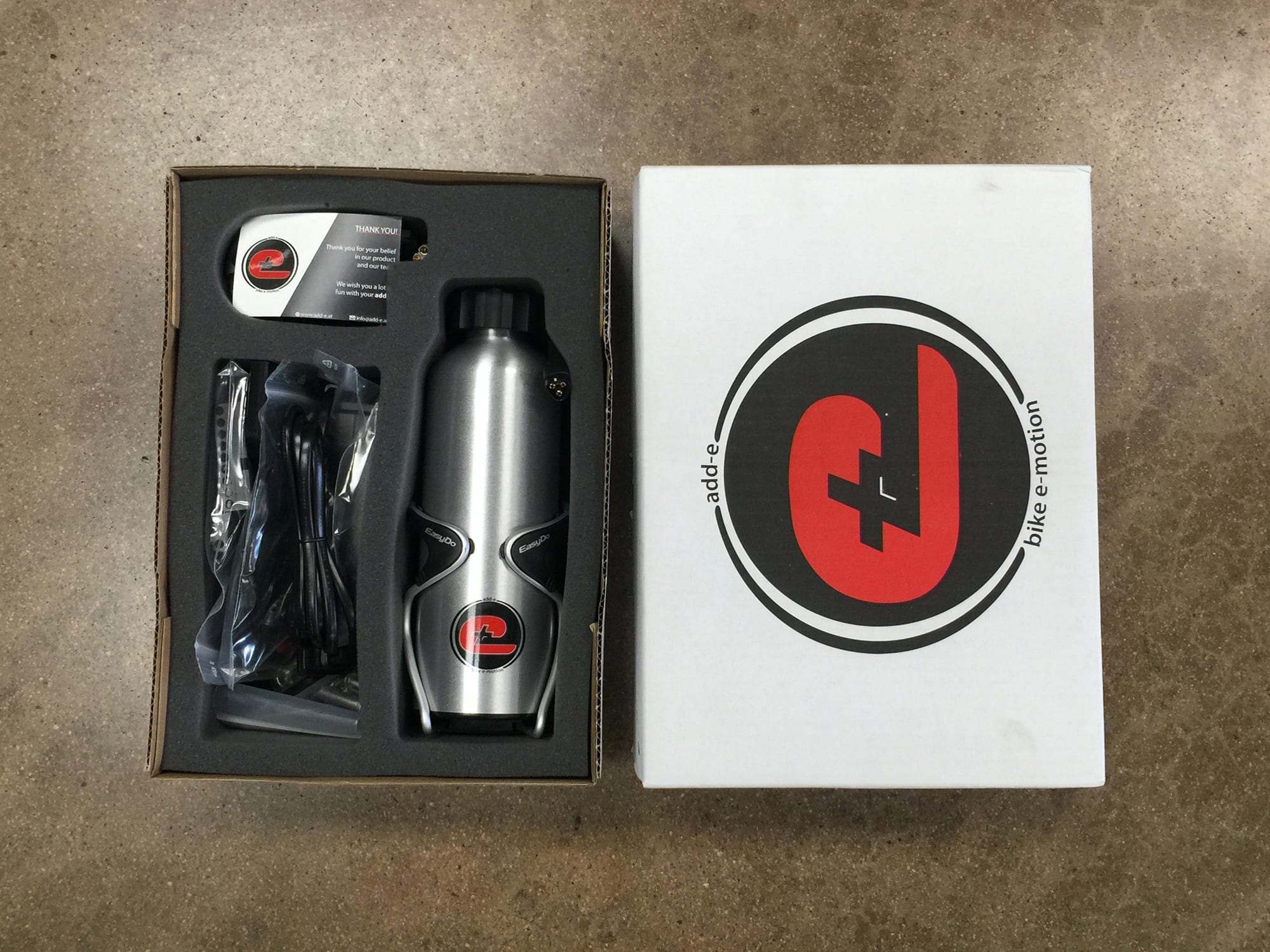


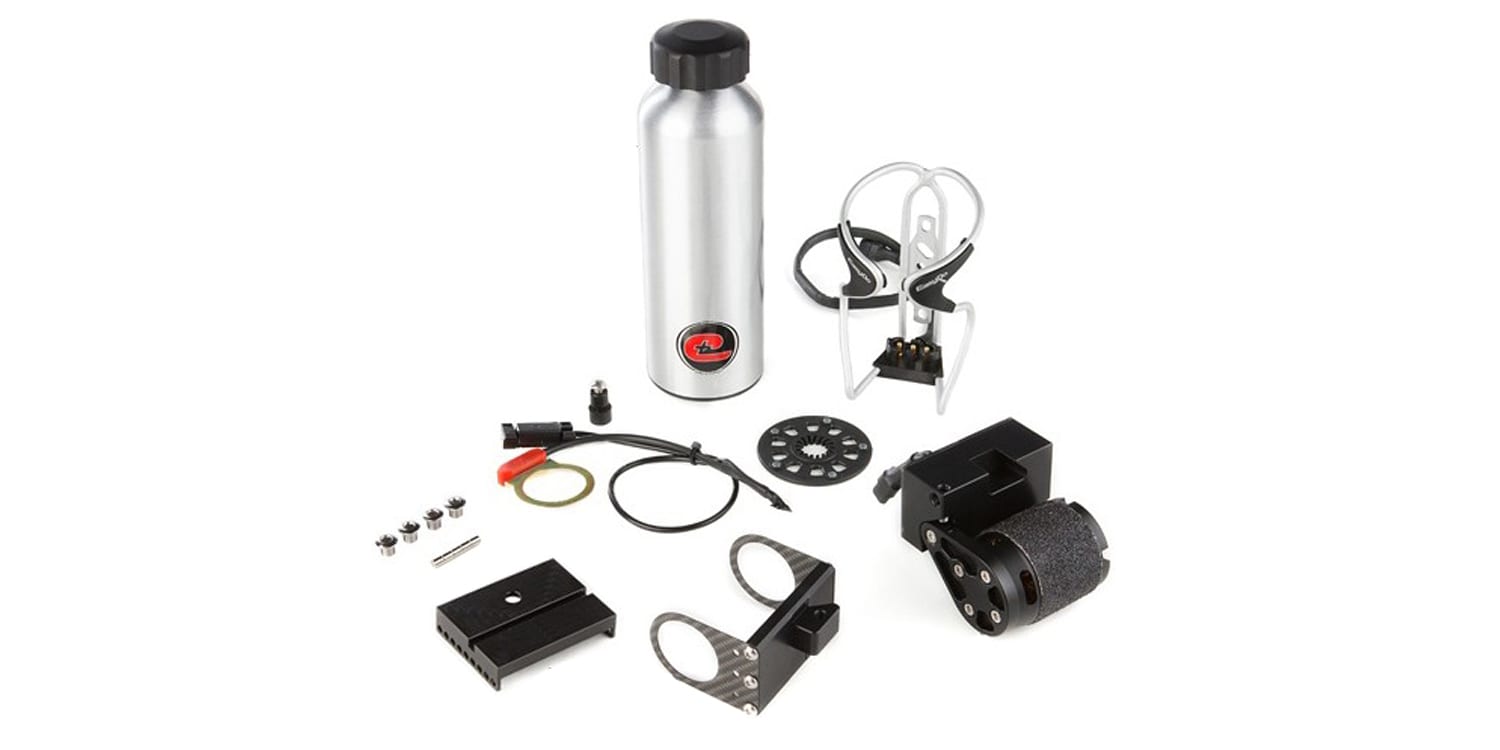
Greg Ritter says
Thanks for your review of the 600W Add-e kit. Always learn alot and helps in making decisions about an ebike. Like the idea of how it works, but for price and what it actually does? ? ?
Maybe the go-e on bike kit will be the ticket. Sounds like its about half the price and comes with an app to keep track of speed, and adjust the electronic features. It claims to be 800W. Hopefully those guys will send you one to try and inform the American market about its capacity. Will keep watching and reading your reviews.
Court Rye says
Sounds good Greg, I’m excited to check it out and compare the sound, power and speed… Hopefully I’ll get one soon ;)
Greg Harm says
Court points out this example of the major pitfalls of this industry, i.e., when you spend over a $1000 for a kit, you don’t want to have to do a great deal of fabrication.
These startup manufturing companies in this industry have the best of intentions, but this particular kit seemed to have a dozen or more pitfalls that required calls to California to resolve. When you add in limited business hours, and phone hold times, one would need an infinite well of patience to complete the instsllation of this motor.
It’s important to note that this professional bike mechanic had far more bicycle tools thsn the common cyclist, but still needed to physically take the bike to a formal shop (and very few of us live or work next door to one.)
That said, I’m old school–in that if I buy something and have to wait a week or more for it to arrive, I want the ability to bolt it on and go. AT LEAST the first weekend after it arrives. But in this case, he had to jump through a host of hoops to learn all of the steps that they had failed to include instructions for. It’s probablt a safe bet that there are still steps in the installation that this company didn’t bother to tell him about.
Finally, the lack of any meter, to show the operator how much power remains, or indicators to inform the user what power level he ir she is using, and the noise: any one of these would be a deal breaker for me.
Since the ebike industry is still in its infancy, it is plagued by undercapitalized rookies that will most likely be gone a year after you buy the product. Thanks, EBR for helping consumers make informed ebike product purchases, and especially for giving consumers the straight market analysis as to whether a product has value–or is just not worth it to have to practically rebuild it prior to its first use.
Court Rye says
I appreciate the innovation and admire the small size of this thing but yes… it seems to require more effort in some situations and the 600 vs. 250 watt versions seemed very similar, to me that was the biggest surprise.
MikeB says
It is very interesting imo but does need some more refining. I would love to have a very light weight, easy mount on regular bike e assist. Make it good for MOST riders 10-15 mile rides with no fear because the bike is still easily ridden without assist. Big huge motors that can climb the steepest hills with huge heavy batteries are NOT the only thing needed or wanted.
Court Rye says
I’m totally with you… I’d love a light weight QUIET ebike kit. Even something with 180 watts and a five mile range, I’d use it sparingly but feel good getting up hills or pressing through wind. Hope we see something like this in the future. I think Add-E could do it if they just made it quieter.
Jean cleverson da silva says
Vivo em Brasil estado de Rondônia adoraria compra um kit add-e para colocá em minha bike enfelismente vivemos longe de tudo tipo de recurso e tudo e muito difícil consequir coisa de qualidade achei maravilhoso este produto e sei que vai ser um sucesso de vendas E tomara que logo logo Venha para perto de nós porque eu sou um apaixonado por bike elétrica.
Court Rye says
Eu não vender esses kits mas talvez você pode comprar um do distribuidor aqui nos EUA e tê-lo enviado? Tente entrar em contato ELV Motors em Santa Clara, CA. Seu site é http://www.elvmotors.com
Bereket Tesfay says
Add-E 250W Kit Review I want to get one but I don’t no how?
Court Rye says
Hi Bereket, not sure where you live but I believe in the US there’s a dealer called ELV Motors in Santa Clara California that sells this kit. They might even be willing to ship it. Hope this helps!
Rick says
Horrible test. Put it on a descent road bike or at least put a smooth tire on the cheapo mountain bike you put it on. That tire is horrible for the motor to grip. It makes a ton of extra noise also. Use your head…
Court Rye says
Hi Rick, I appreciate your feedback. Sometimes my equipment and time are limited due to the travel required to find and review bikes. Did you see the review I shot of the Add-E 250W? I used a more appropriate bike there but was hoping that this bing the 600 watt version, it could go off-road and be like the lightest, cheapest way to create an electric trail bike. Unfortunately, things just didn’t work out that way… Anyway, I’ll keep your suggestions in mind for next time :)
Gordon Law says
People tend to cut zip ties with the blade of the snips (scissors) or pliers cutting the longest portion of the tie from one end to the opposite. That almost always leaves a residual piece of plastic which is usually sticking out and is as sharp as a knife blade. However, if you turn the cutting tool 90 degrees and cut the material from both sides to the center, you will find that the cut will be flush without a protruding edge to cut anybody. One of my old telephone bosses taught me this proceedure and the ties were no longer a danger to any of our employees working on our cables.
Court Rye says
Interesting, appreciate your tip Gordon! Thanks for sharing :)
D Sca says
I like your reviews… Thank you :-)
Couple questions on the “Add-E 250W Kit Review” (and I you reviewed 600 Watt Unit??); where motor directly snaps into position to drive the bikes tire tread.
Q1)
Would all power trains using rotational torque applied directly to bike tire rubber be intrinsically more likely to be noisier than most other solutions ((a) pullies with gear teeth/belt with teeth, (b) gear boxes,…)?
My experience with direct drive brushless motors in other applications are quite quiet as long as the PWM frequencies any underdamped control loop issues causing resonances are at higher frequency than we humans have as an upper hearing frequency (ball park of 17kHz to 20kHz).?
*** ramble mode ON**** (skip this part…)
Some wonder… 20 kHz to 22 kHz??? Yes some of us hear high frequencies like when old CRT(s) would switch from EGA to VGA or my CRT tv’s flyback transformers ;-{
The high frequency junk is my issue… Its the low frequency noise that varies with speed of travel that will catch the attention of anyone concerned that the motor is perhaps in the mo=ped range..
Perceptions kill… at least they attract lots of un needed/unwanted attention…
If noise were the real litmis test a Prious in EV mode would be like one of those 12volt young child motorized jeeps, trunks, Barbie cars, etc…
*** ramble mode OFF****
Q2) anyone attempt front wheel drive???
yes there is potentially locking up the front wheel on slick as ice surface when de-acceleration & torque steer issues like on a front wheel drive quasi-muscle car == like the old Ford Probe Turbo GT… had same engine as Mazda MX6 (I heard right from the horses mouth…) but the MX6 with its soft suspension and no turn felt like driving “on a cloud”/hydroplaning all the time. Rigid Bikes and Cars with firm sports shocks give good proprioceptive feed back some humans body’s and joints…
One beauty of how that motor to bike tread kit approach was that if the motor was trying to go faster than tire it would pivot further into the tread. If the that rear motor was trying to be regenerative the torque being transferred from tire back to wheel would be limited by how firmly the motor is being pressed against the tire by the hysteresis of the mechanism that snaps the motor against the tire tread and the force of that snap mechanism… Is it spring loaded????I can imagine that would still work because the torque of motor to tread is opposite direction of that the torque of the tire tread is pushing back in motor.
From curb-side/(car passenger side in US); back wheel is rotating clock wise and motor is rotating counter clockwise, generally with Motor torque being also CCW. If motor jammed or was put in brake mode by putting a electrical load on the Back EMF of the motor, than tire tread clockwise rotation would put press on motor to pivot away for the tire tread.
I’d like to try this motor on tire tread approach for front wheel drive of a two wheeled bike and perhaps a recumbent that has two front wheels and one back wheel,
Court Rye says
Yeah, I think this type of drive system always produces more noise because it’s external, even with smooth tires there is some noise being produced vs. a chain being pulled on mid-drives or all of the work being done inside of a hub motor. Knobby or high-texture tires do tend to be louder and less efficient. They might even shake the unit to death sooner or make the magnets inside come loose. This is just conjecture :)
As for a front-wheel setup or two-motor setup, I like the idea! I think the challenge is figuring out how and where to mount the motor (maybe a sturdy fender type thing on the front wheel?) the real challenge is that the motor has to stay with the front wheel even as you steer, so you’d need longer wires to connect back to the battery and cadence sensor. I think there might be a little spring inside that allows it to slump off of the wheel when the motor is not powered but it’s mostly just gravity. When the motor isn’t turning, there is no centripetal force pushing it up to make contact and ultimately push the tire.
Britney Hunter says
Are there any other kits like this available that you know of?
Court says
Hi Britney! Sorry for the slow reply here… No, I haven’t reviewed or seen any. At one point, I saw the exact same thing being sold under another name… but I haven’t seen competing products that are different from the Add-E.
Britney L Hunter says
Thanks :) It is a cool design. Hopefully more come on the market.
Lin B says
Check out the newest addition to the friction drive market: onemotor.co It’s light, offers battery options, has a smart app, and no wires.
Court says
Looks like a neat product, Lin! Hopefully I’ll get to review it someday :D
Lin says
OneMotor is shipping now, first user review is in. Please try and get one from Jeff to review! This is the 3+ year crowdfunded project formerly known as ShareRoller.
John Smith says
Any other recommendations for really small, lightweight kits? And I love the water bottle battery disguise! Just want a tiny bit of pedal assist w/o much weight or the ebike look.